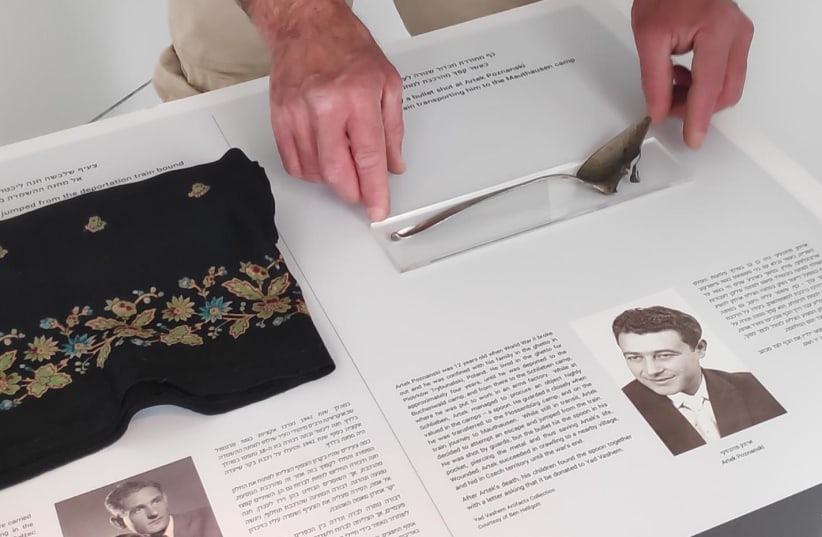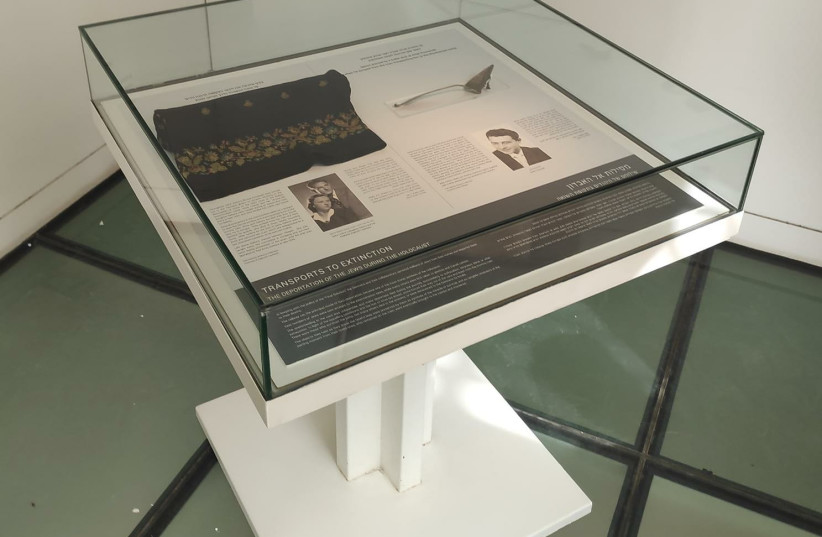Yad Vashem on Tuesday unveiled a new exhibit dedicated to the central theme for this year’s Holocaust Remembrance Day, “Transports to Extinction: The Deportation of the Jews during the Holocaust.”
Before entering the Holocaust History Museum to learn of the fate of the Jews of Europe and North Africa, visitors will this year encounter two items that help describe the suffering of the millions of Jews at the hand of the Nazis and will tell unique stories of their owners.
One is a scarf worn by Anna Lichter who jumped from the deportation train that took her and her daughter and thousands of others to the Bełżec extermination camp.
Throughout 1942, Aktions (brutal roundups) were carried out in the Tarnopol ghetto in Ukraine in which many of the city’s Jews to Bełżec were detained and transported to their deaths.
Lichter, and her 18-year-old daughter, Debora, were caught during an Aktion in late 1942 and were forced into cattle cars bound for Bełżec. Several youths in one of the overcrowded wagons managed to open a barred window and started jumping out of the moving train. Anna and Debora were among those who jumped but they were spotted by guards who shot at them and Anna was killed. After waiting for the train to pass, Debora went to Anna and removed her scarf, which she kept as a last cherished memento of her mother.
The second item on display is a spoon that belonged to Artek Poznanski, who was shot at by SS guards when he jumped from a train transporting him to the Mauthausen camp.
Poznanski was 12 when war broke out and he was confined with his family in the ghetto in Piotrków Trybunalski, Poland. He lived there for several years until being deported to Buchenwald from where he was taken to the Schlieben labor camp where he was forced to work in an arms factory.
While at Schlieben, Artek managed to gain possession of a highly-valued object in the camps – a spoon. He guarded it closely and during a train journey to Mauthausen, Artek decided to escape. He jumped from the train and although he was shot at by guards, the bullet that would probably have killed him hit the spoon in his pocket and he survived. Although wounded, he succeeded in crawling to a nearby Czech village where he hid until the end of the war.
After Artek’s death, his children found the pierced spoon together with a letter he had left asking for it to be given to Yad Vashem.
“Artifacts from the Holocaust are not just objects. They are symbols, and sometimes they are all that remain of their owners,” said Yad Vashem Chairman Dani Dayan.
“It is Yad Vashem’s duty not only to display these items, but also to tell their stories: The victims, who rarely had an opportunity to provide testimonies of their suffering, and the survivors, who one day will no longer be with us, leave behind their last will that they not be forgotten in the passage of time. We owe it to them, as well as to future generations, never to forget.”

